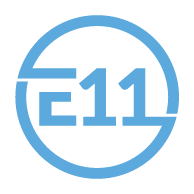by Lise Patry, ba sc (chem eng), llb, icd.d, Patry Law
I recently spoke at a legal seminar on “Mastering Public Procurement,” a session organized by lawyers for lawyers. A lot of information was presented on the state of the law in public procurement, along with discussions on new and not-so-new topics of interest.
I took a different approach to the discussion.
Having led the transformation of a public procurement function from an arm’s-length transactional model to a client-focused, integrated model in my previous role as head of a procurement department, my interest has primarily been on setting up structures to manage procurement risk rather than react to procurement case law on a case-by-case basis. Less time spent analyzing case law, more time spent on avoiding becoming case law.
Public-sector buyers in breach of their procurement obligations face a firing squad of attacks. Aggrieved bidders have a candy store of options available to them to challenge the government buyer. Bidders suing federal public-sector buyers can file concurrent claims in provincial court, the Federal Court of Canada, and the Canadian International Trade Tribunal. There are at least four types of claims that can be brought against a federal public-sector buyer.
A bidder can:
- seek an interlocutory injunction to stop the process or award of contract in its tracks,
- claim remedies for breach of a trade agreement,
- seek remedies via a judicial review application, and
- claim monetary damages for breach of common-law duties.It doesn’t end there.
- A strong procurement governance framework helps avoid these problems before they arise. Every in-house lawyer and procurement officer should understand how their governance framework measures against best practices and relentlessly strive to ensure that it is as strong as it can be.
- Apart from being highly visible and public, this negative media attention, legal claims and outsider questions can be expensive and time-consuming to manage and will definitely affect corporate reputation. In addition, and most importantly, bidder claims can delay the purchase of goods and services essential for meeting operational objectives.
- Bidder legal claims are often accompanied by lobbying efforts designed to create public pressure on the organization and senior management. A kitchen-sink approach is not uncommon. An aggressive bidder armed with their version of events will approach journalists looking for a story, politicians who want to embarrass the current government, an auditor-general who may want to conduct a review, a board chairperson who may want to take directive action over management, and anyone else who might have an interest in following up on the bidder’s allegations of wrongdoing
Minding the gaps of procurement governance
How can you tell if your organization’s procurement governance framework is strong? Perform a gap analysis. Measure your existing framework against a benchmark. To do this, you need to find a good benchmark or develop your own benchmark.
There are many off-the-shelf procurement governance models that can be used for benchmarking purposes. However, these are usually too detailed to be used as a quick gap analysis and doing so may make your initial gap analysis feel daunting.
The benchmark used for our procurement transformation project was developed after careful study of current procurement governance best practices and supplemented with a group session during which we ultimately defined our own benchmark for the procurement function.
The study considered a number of things, including the Office of the Auditor General of Canada’s 2007 report on Crown corporate governance, the 2005 Bellamy inquiry report, reports of the Office of the Procurement Ombudsman, practices of peer Crown corporations, and various procurement law texts and publications.
In simplified form, this article refines the benchmark created by my team into 10 areas of focus.
- Procurement Policy and Procedures
This is your accountability framework. Every organization should be governed by a policy that’s supported by procedures and other administrative documents such as guidelines, instructions or directives. They should define roles, responsibilities, and accountabilities of all involved and include approval thresholds for procurements and contracts.
The accountability framework should also cover ethical considerations and address how conflicts of interest should be managed. Procedures should allow for flexibility in decision making, which normally means allowing for risk-based decisions. Significant risk-based decisions should require senior executive or Board involvement.
The final package of policy and procedures should be organized into a single contracting manual that is published internally and accessible to all.
The benefit: Clarity of roles and responsibilities helps avoid internal conflicts among staff involved in procurement (which is often present among internal clients and procurement officers) and ensures that accountability for decisions is placed on the right people and at the right level.
- Templates
Procurement templates are legal documents, but it’s important to keep in mind that they are mostly used by non-lawyers such as procurement staff, internal clients, and vendors. Because non-lawyers are working with these documents, it’s very important that they be user-friendly and consistent.
Draft them in plain English and maximize the use of a fill-in-the-blanks approach. This makes information easier to find, the documents are easier to read, and it minimizes problems associated with non-lawyers drafting legal documents. The documents should have a consistent look and feel and use the same terminology across the suite of templates, to promote clarity and ease of reading.
Consider adopting a tiered set of templates, with one tier comprised of simplified templates to be used for low-value, low-risk purchases. The longer, more comprehensive templates would be used for high-value, high-risk procurements.
The benefit: A strong suite of templates will make procurement easier for everyone, and should lower both transaction costs and procurement risks.
- Procurement Planning Process
Ensure that an explicit annual procurement planning process is in place and aligned with the corporate/budget planning cycle.
As part of the annual planning exercise, managers should list what goods and services they will need to procure in the upcoming fiscal year and consult with the procurement team on the estimated amount of time each procurement will take.
The benefit: Planning helps avoid time pressures in the solicitation process, which are often at the root of legal problems
- Trained Procurement Staff
All procurement staff should possess a solid understanding of procurement law, but technical knowledge of procurement is not enough. Procurement staff also need to be skilled communicators and negotiators.
As the organization’s custodians of the fundamental aim to be “open, fair and transparent” in all procurements, procurement officers’ goals are often perceived to run counter to the internal client’s goal of meeting operational objectives. This provides fertile ground for internal conflict and mistrust between the two groups. Procurement officers need to be able to effectively manage this perceived conflict and stand their ground with tact – but they should also not be afraid to escalate matters as, appropriate.
Onboarding all new procurement staff is also critical. No matter how technically strong or tactful the procurement officer, if they do not understand the organization’s governance framework and approach to risk, they will not be effective.
The benefit: Strong procurement staff equipped with the right knowledge, technical skills, and ‘soft’ skills promotes the right balance between operational objectives and procurement risks.
- Trained Internal Clients
All managers should receive basic training on the principles, processes, procurement timelines, and their own accountabilities when procuring goods and services. Otherwise, there’s a risk that managers will prioritize operational objectives over the proper balancing of procurement risks, which can spell disaster for an organization.
Without a good understanding of procurement, managers (and the employees who report to them) may grow to resent the procurement staff for insisting on following what may be perceived as bureaucratic steps in the procurement process. This type of misalignment between procurement and internal clients can significantly raise the risk of problems in any solicitation.
The benefit: Creating an effective balance between the pursuit of operational objectives and respect for the inherent risks of procurement.
- The Three-Party Negotiation Team, A.K.A., the “TNT”
“TNT” stands for the “three-party negotiation team,” which is a team consisting of:
- the internal business client,
- the procurement officer, and
- legal counsel.
During our transformation project, TNT came to be the code word for the cross-functional project team that is assigned to each solicitation. This team is responsible for developing the documents, ensuring that the project plan for the solicitation is adhered to, supporting corporate decision-making, and minimizing procurement risks.
The procedures should contemplate the appointment of a TNT to support procurement initiatives, as well as a protocol for escalating issues that can not be resolved by the team.
The benefit: When the TNT is working well, the procurement is completed on time, and the right balance is struck between meeting operational objectives and managing procurement risks.
- Performance Management Program
The procurement team should establish KPIs – Key Performance Indicators. This could take many forms and include client satisfaction metrics, or the number of supplier objections. It depends how a particular procurement department defines success.
Performance results should be measured and reported every year, and annual plans should address deficiencies.
The benefit: A focus on sustained high performance of the entire procurement team ensures that the team is working together toward common goals. This should increase overall team performance and internal client satisfaction, with the side benefit of reducing risk.
- Commitment to Continuous Improvement
Procurement is in a constant state of evolution.
This statement gets raised eyebrows, but it’s true for some entities, as shown in the reports of the federal Office of the Procurement Ombudsman every year. There is always something new to keep in mind as you consider your next steps in enhancing procurement governance.
Your procurement governance framework should incorporate an annual review process that considers environmental changes in procurement law, as well as best practices. An annual update ensures that the organization remains aware of any new gaps in its governance framework, and helps pinpoint higher-risk gaps – which in turn helps prioritize ongoing work on the framework. An annual review shouldn’t take long and will pay big dividends in the long run.
The benefit: A formal commitment to continuous improvement ensures that the governance framework is current, and that resources are being invested to address the highest-priority gaps.
- Change Management Procedures
Maintaining a performance management program and a commitment to continuous improvement will require an adaptability to changes in the governance framework.
Effectively implementing a change in your governance framework is not to be taken lightly. If a change affects people beyond the procurement team, involve those people in your discussions early, to avoid the risk of resistance and wasted efforts.
Changes should be planned over a period of time, rather than made all at once or in an ad hoc, unpredictable manner. Establish a regular schedule for changes, such as the first week of each month or quarter. Communicate the schedule of changes widely in the appropriate channels for your organization.
Document the process so that it is done consistently and internal stakeholders know what to expect. For important changes, train internal clients in one-on-one, group or video training modules.
The benefit: An effective change management procedure ensures buy-in, enhances compliance and supports the goal of minimizing procurement risks.
- Executive Leader Accountable for Procurement
The manager cares about meeting corporate objectives, and the procurement officer cares about following the process and managing risk. These goals sometimes clash and lead to internal conflict and escalation – of stress levels and, ultimately, issues brought to the senior management table.
If there isn’t an executive at the senior management table who is accountable for managing procurement risk, it is likely that operational interests will play a greater role in decision-making, which could increase procurement risks and problems.
The benefit: Having a balance between operational and procurement considerations at the senior management table is critical to ensure that procurement risks are managed appropriately and effectively.
The above areas of focus for a high-level gap analysis are generic enough to be used by any organization. Once the analysis is done, major gaps in the procurement governance framework can be identified, and the bigger areas of risk should be apparent. This increased understanding of the critical gaps should pave the way toward a stronger procurement governance framework and decrease risks of bidder claims and all that entails.
Lise Patry is a lawyer and former business executive with a strong background in technology and more than 20 years of business and legal experience in the public and private sectors. As principal of Patry Law, in addition to general law, she offers virtual counsel services and specialized expertise in contracts, licensing, government procurement and corporate governance. She can be reached in Ottawa at (613) 730-5959 or [email protected]. This article originally appeared May 9, 2016 at patrylaw.ca in Government Procurement/Bidding and Tendering. It has been edited for style and is used by permission.
Readers are cautioned not to rely upon this article as legal advice nor as an exhaustive discussion of the topic or case. For any particular legal problem, seek advice directly from your lawyer or in-house counsel. All dates, contact information and website addresses were current at the time of original publication.


.jpg)





